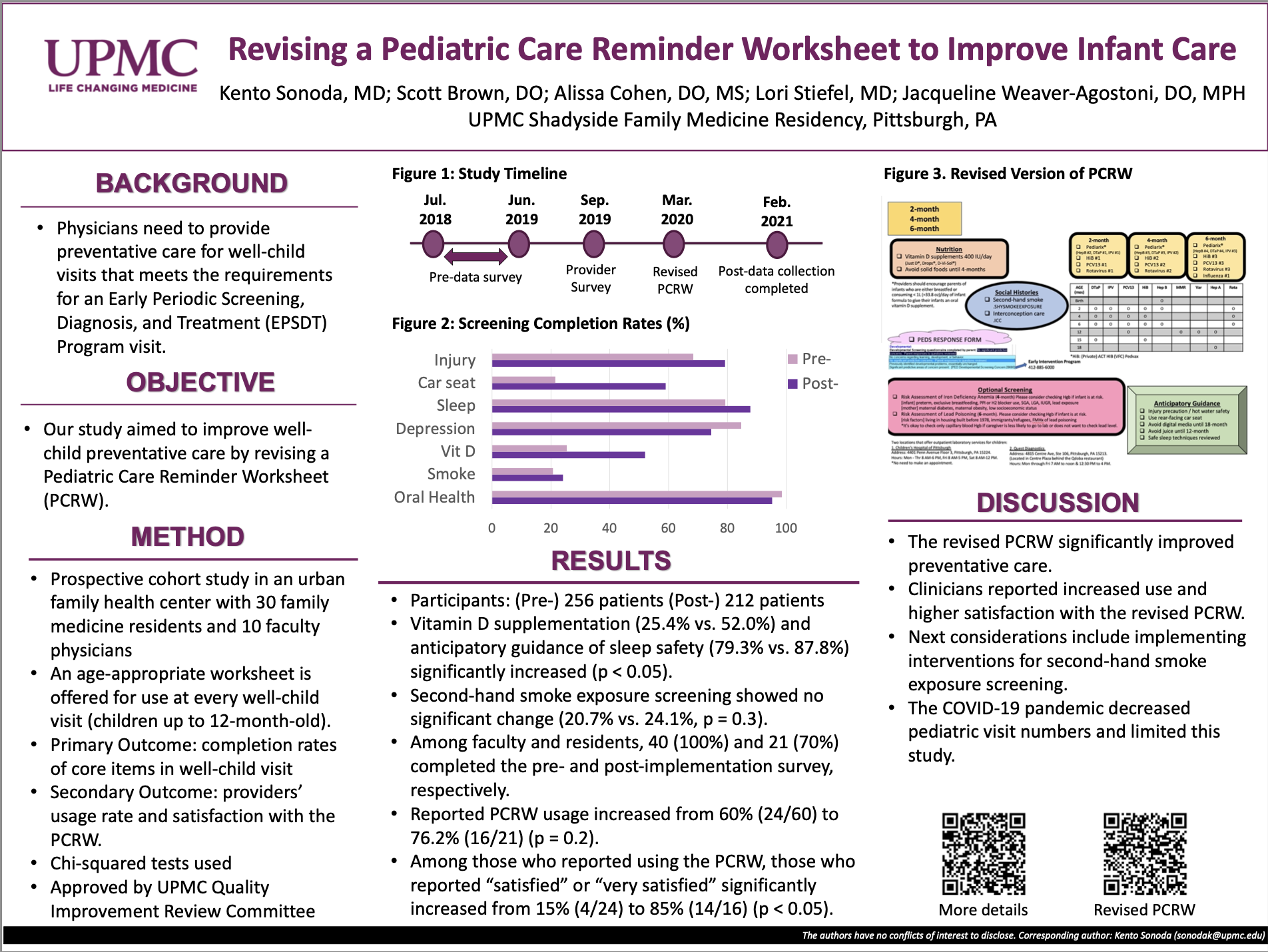Revising a Pediatric Care Reminder Worksheet to Improve Infant Care (<12 Months)
Authors: Kento Sonoda, MD AAHIVS; Scott Brown, DO; Alissa Cohen, DO, MS, DipABLM; Lori Stiefel, MD; Jacqueline Weaver-Agostoni, DO, MPH, DipABLM, FACOFP
Background:
Physicians need to provide preventative care for well-child visits that meets the requirements for an Early Periodic Screening, Diagnosis, and Treatment (EPSDT) Program visit. Our study aimed to improve well-child preventative care by revising a Pediatric Care Reminder Worksheet (PCRW).
Methods:
This single-site prospective cohort study was completed at an urban family health center with 30 family medicine residents and 10 faculty physicians. An age-appropriate worksheet is offered for use at every well-child visit. This study focused on revisions to the worksheet for children up to 12-months-old. Pre-implementation data were collected by chart review from July 2018 to June 2019. In September 2019, providers completed a pre-implementation survey about the PCRW, which then was revised based on the survey results. In March 2020, the revised PCRW was introduced to clinic flow. Post-implementation data were collected through February 2021. Outcome measures were completion rates of core items in well-child visit and provider’s usage rate and satisfaction with the PCRW. We used chi-squared tests to determine significance.
Results:
In the pre- and post-implementation periods, 256 patients and 212 patients were seen, respectively. Screening for two core items significantly increased, including Vitamin D supplementation (25.4% vs. 52.0%, p < 0.05) and anticipatory guidance of sleep safety (79.3% vs. 87.8%, p < 0.05); but second-hand smoke exposure screening showed no significant change (20.7% vs. 24.1%, p = 0.3). Among faculty and residents, 40 (100%) and 21 (70%) completed the pre- and post-implementation survey, respectively. Reported PCRW usage increased from 60% (24/60) to 76.2% (16/21) (p = 0.2). Among those who reported using the PCRW, those who reported “satisfied” or “very satisfied” significantly increased from 15% (4/24) to 85% (14/16) (p < 0.05).
Conclusion:
The revised PCRW significantly improved preventative care. Clinicians reported increased use and higher satisfaction with the revised PCRW.

